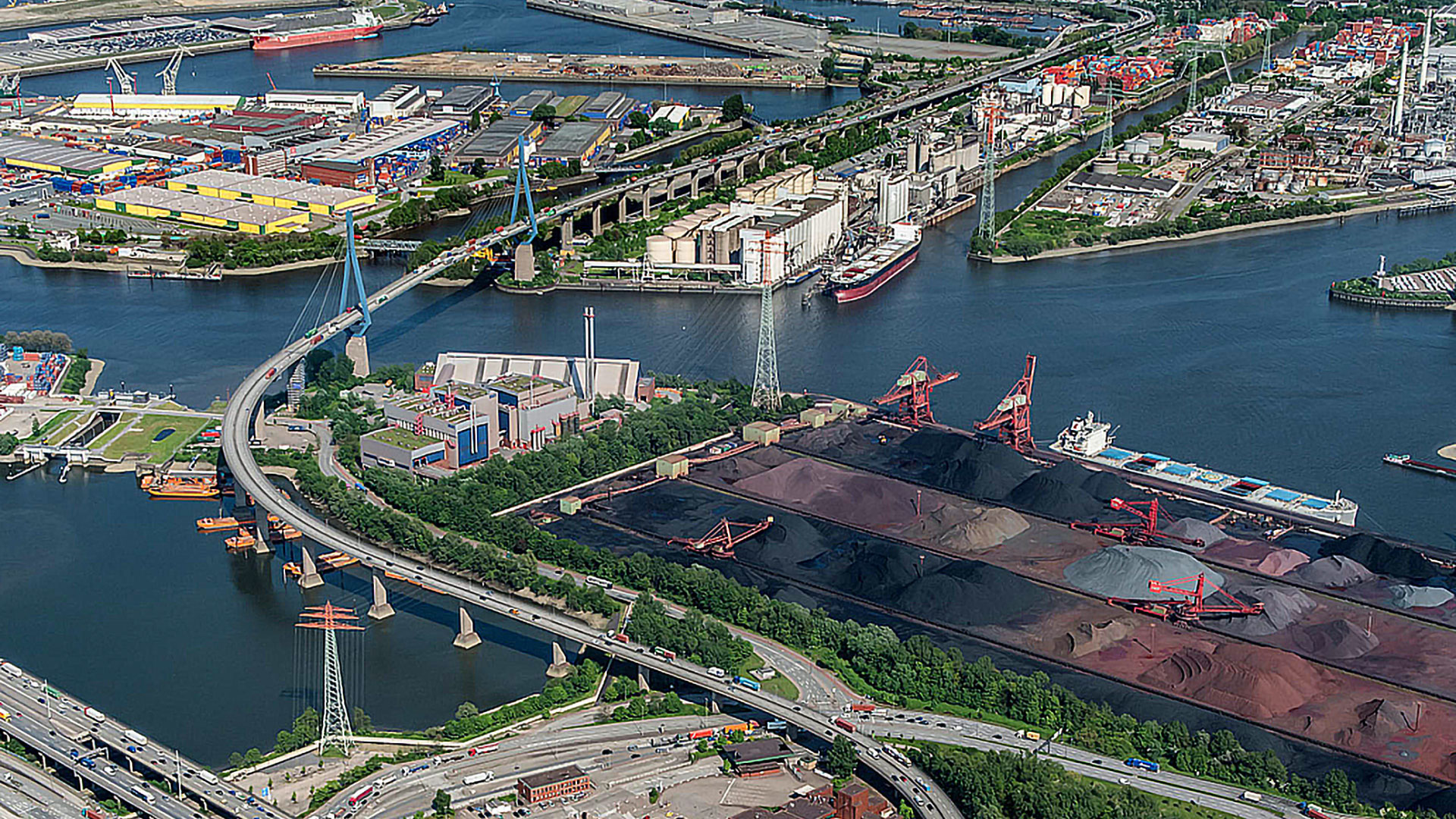The smartBRIDGE Hamburg project devised a digital twin of a 1970s bridge using open BIM technologies. Allplan and Solibri were instrumental in developing the twin that enables the Hamburg Port Authority, HPA, to maintain the critical infrastructure asset predictively.
Built in 1974, the Köhlbrand Bridge is Germany’s second-longest road bridge and one of its busiest. The cable-stayed bridge serves around 36,000 vehicles daily, thus being crucial to the local economy.
The age of the bridge and the amount of daily traffic it supported meant that continuous real-time monitoring was the best way to identify repairs and minimize disruption to traffic.
“The HPA is the bridge’s operator, so we wanted to find a way to maintain and operate the bridge more effectively. After recognizing the potential of digital twins to assist with this goal, we initiated the smartBRIDGE Hamburg project in 2019”, says Jens Meier, CEO of HPA.
The two Nemetschek Group solutions, Allplan and Solibri, enabled the project to reach its goals with OPEN BIM, ICF data exchange formats, and the BIM Collaboration Format (BCF).
An all-inclusive BIM model
A BIM model of the bridge was designed from scratch, as there were no existing models due to the bridge’s age. Multiple BIM applications, including Allplan, were used to create a highly detailed bridge model.
Despite being an as-built model, the design process still required a BIM Execution Plan (BEP) and agreement between all parties on the element taxonomy and Level of Detail (LOD) requirements.
“However, the use of OPEN BIM – a core functionality of Allplan – made managing and exchanging data between different parties and applications possible, as well as efficient,” explains Detlef Schneider, CEO of ALLPLAN.
On a project where multiple solutions are coming together, ensuring consistency and compliance with the BIM requirements would be difficult without a solution like Solibri.
“Here, the model checking solution was able to add value by ensuring that models complied with the requirements outlined in the BEP and other quality standards,” says Ville Kyytsönen, CEO of Solibri.
Situational awareness and simulations
Over 500 IoT sensors connect to their digital counterparts in the bridge model, providing real-time monitoring and automatically issuing alerts. In addition, HPA added traditionally collected bridge inspection and maintenance data to the digital twin. Both data sets are available to the asset management system, enabling better planning and execution of predictive maintenance.
In addition to continuous monitoring, the digital twin enables HPA to run various simulations. After detecting a problem, they can test different solutions and scenarios and assess the results before implementation. These insights are vital for ensuring safety and minimizing disruption for an infrastructure asset as essential as the Köhlbrand Bridge.
“Often, it is difficult to find examples of digital twins being implemented fully, as they are intended to be. The smartBRIDGE Hamburg project shows the practical application of a digital twin in a real-life context, demonstrating just how valuable digital twin technology can be,” says César Flores-Rodríguez, Chief Division Officer, Operate & Manage and Digital Twin.
“Furthermore, our portfolio of OPEN BIM solutions means that Nemetschek can support this emerging technology across the entire AEC/O value chain,” Flores-Rodríguez concludes.
Source: The Nemetschek Group, Munich / Hamburg – April 25, 2023
View the original article and our Inspiration here


Leave a Reply